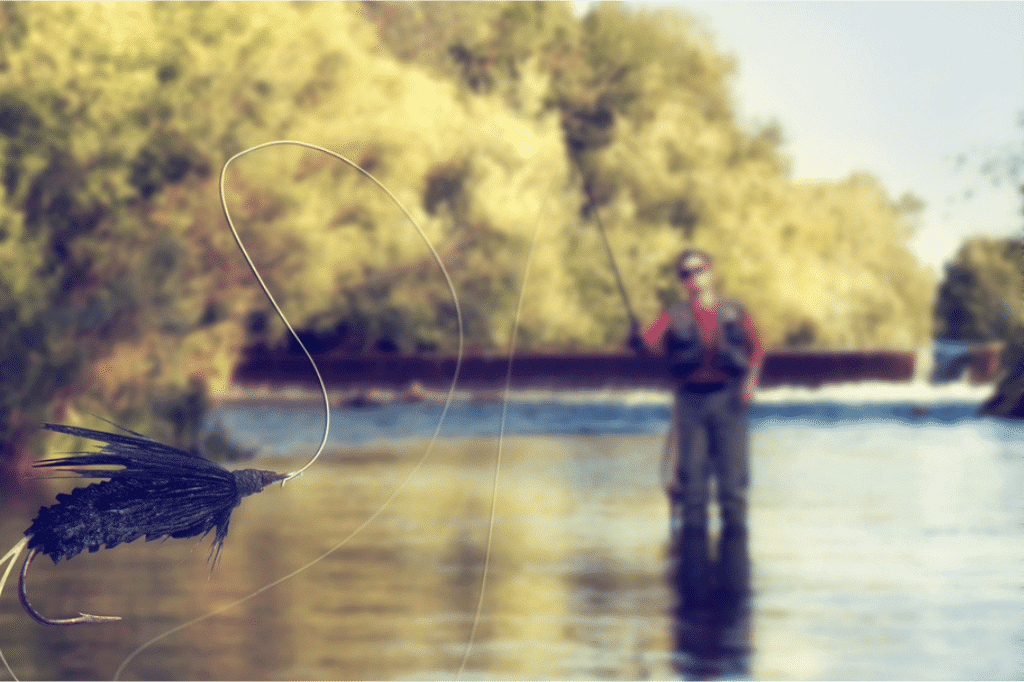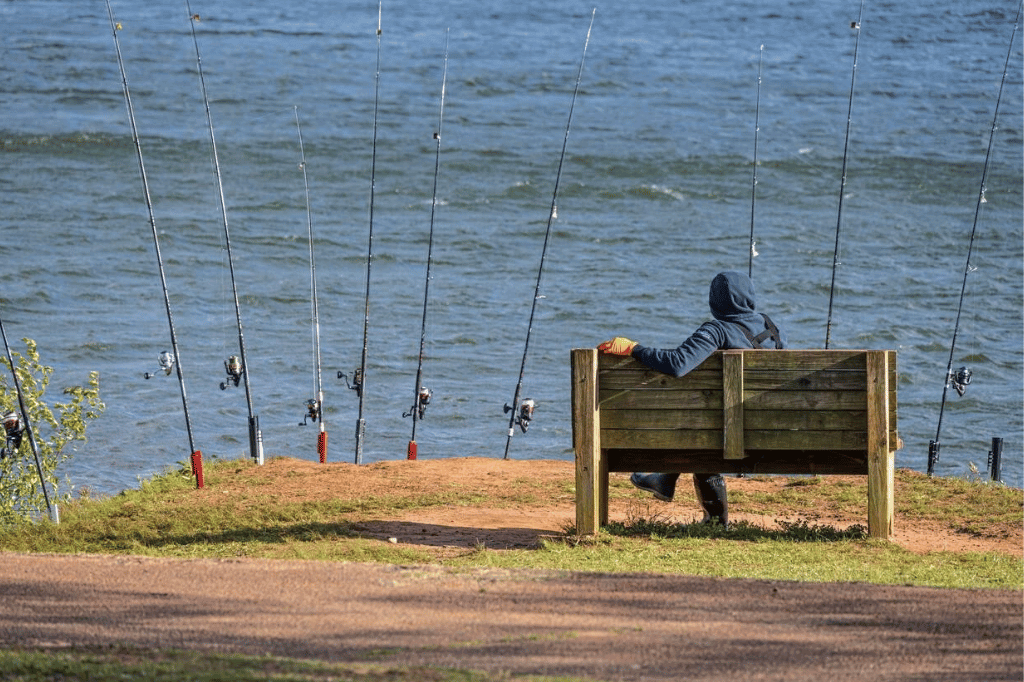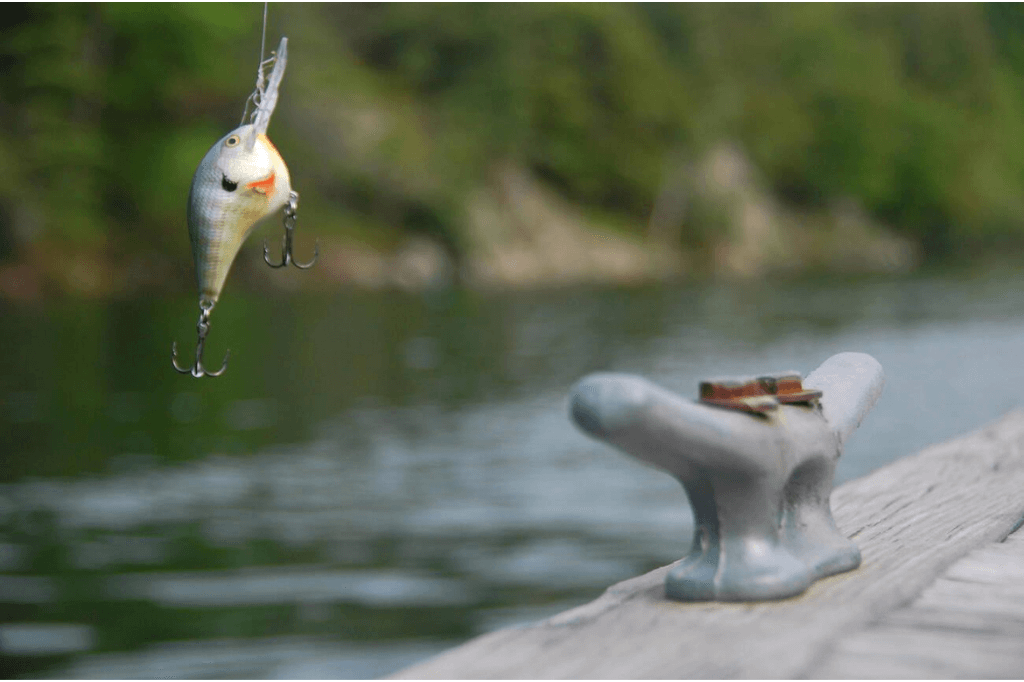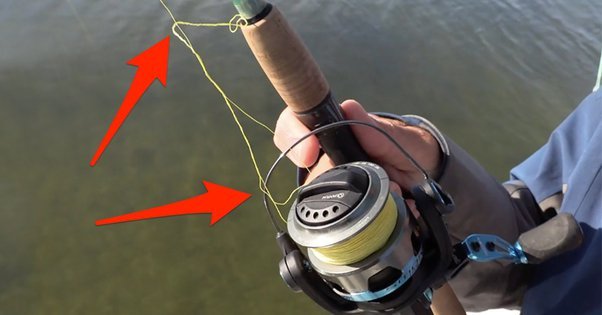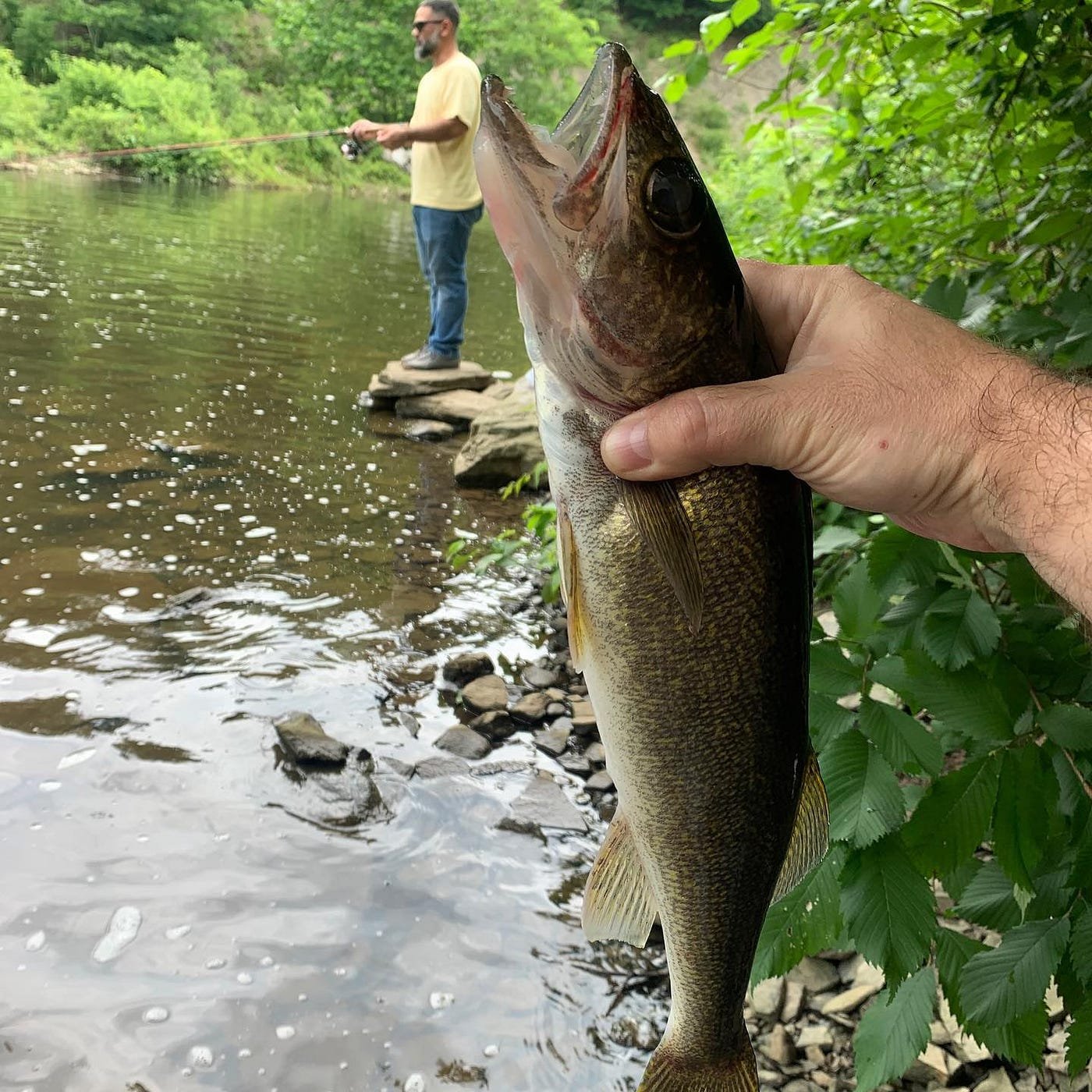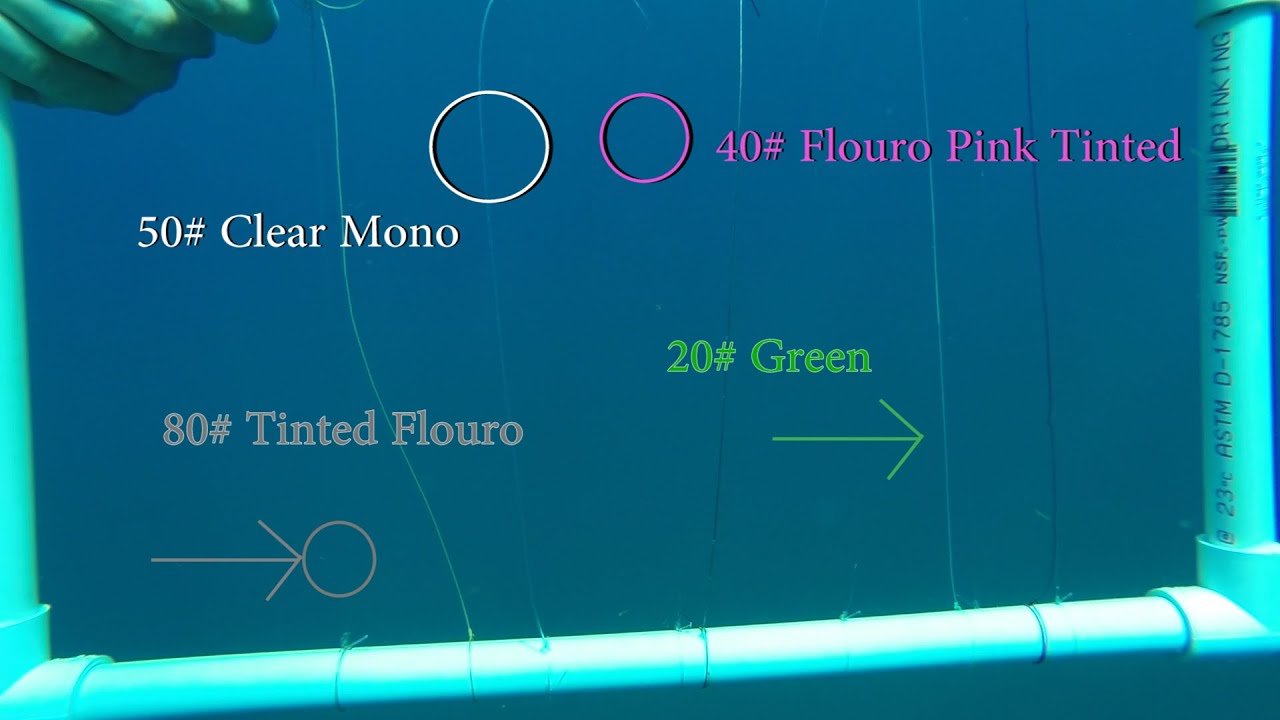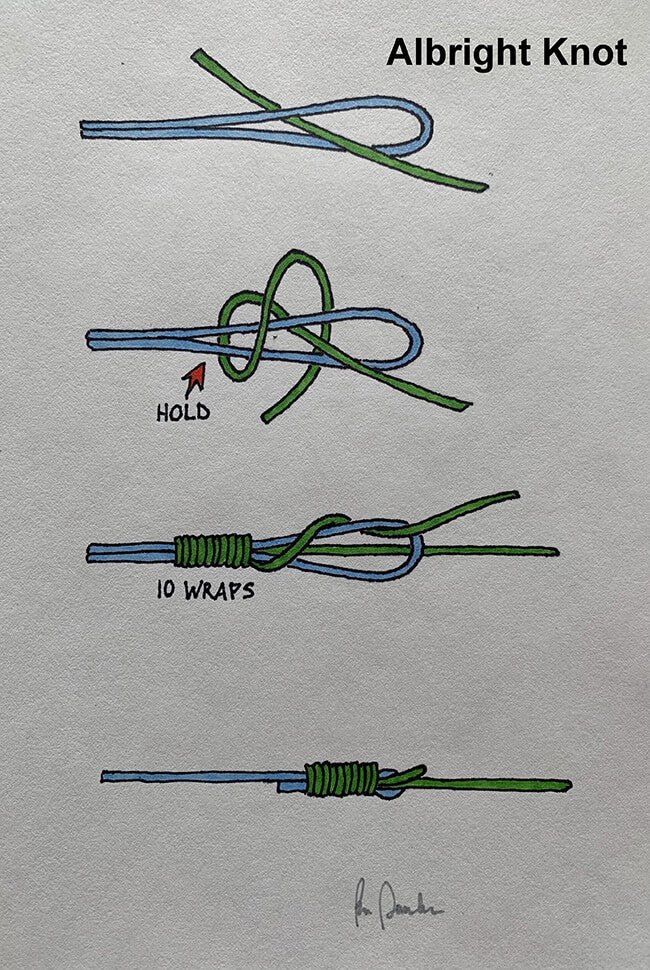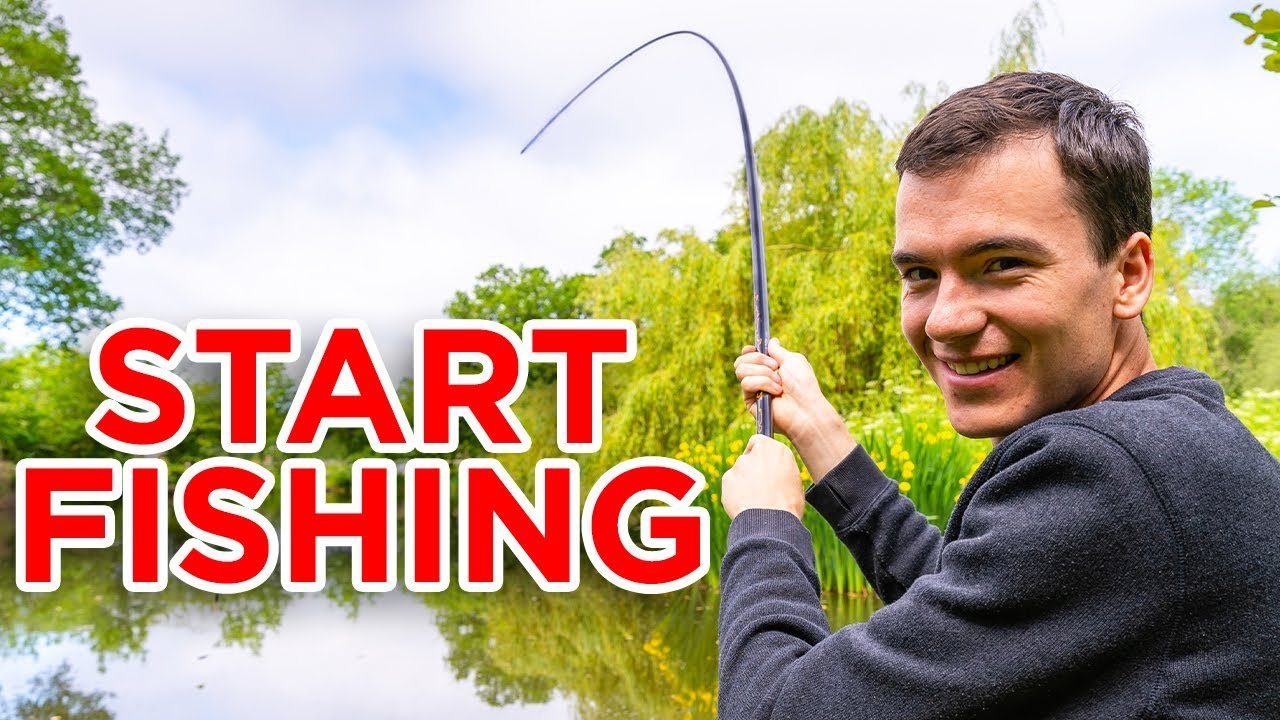Anglers across the globe have embraced the Chatterbait rod for its effectiveness in freshwater bass fishing. This specialized rod has become a staple in the fishing community for its unique ability to handle the vibration and action of a Chatterbait lure.
Its design caters specifically to the needs of anglers who require precision and control when casting and retrieving bladed jigs. With the proper Chatterbait rod, fishermen can enhance their lure presentation, increase their catch rate, and experience a more successful day on the water. Selecting the ideal rod involves considering factors such as length, action, power, and the type of water you’re fishing in. A high-quality Chatterbait rod can make a significant difference in your fishing technique, allowing for more accurate casts, better hook sets, and an overall improved fishing experience.
Introduction To Chatterbait Fishing Essentials
Chatterbait fishing has taken the angling world by storm. Distinctive vibrations and unique movements make Chatterbaits a go-to for bass fishermen. These lures, also known as bladed jigs, combine colour, action, and sound to entice bites in various conditions.
Why Chatterbaits Are Popular
Anglers love Chatterbaits for their versatility. They work in shallow or deep water, clear or murky. Chatterbaits are easy to use and deliver results. Bass find them irresistible due to their lifelike action that mimics small fish.
- Easy to cast and retrieve
- Effective in many water conditions
- Vibrant colors attract attention
- Perfect for all skill levels
Key Advantages Over Other Lures
Chatterbaits offer advantages that other lures can’t match. Their blade creates sound and vibration, triggering a predator’s instinct. This means more strikes and more fish. Below are the key benefits:
| Feature | Advantage |
|---|---|
| Vibration | Draws fish from afar |
| Flash | Mimics baitfish scales |
| Skirt | Enhances action |
| Customization | Adapts to conditions |
Selecting The Perfect Chatterbait Rod
Chatterbait fishing demands a rod that meets specific criteria. The right rod enhances the lure’s action. It also ensures better hooksets. Let’s dive into the key factors to consider for the ultimate chatterbait rod.
Rod Length Matters
Rod length affects casting distance and accuracy. Shorter rods offer better control for close combat. Longer rods excel in casting distance and covering more water. A length of 6’6” to 7’2” is ideal for most situations.
- 6’6” – Great for precision.
- 7’+ – Best for long-distance casts.
Power And Action Considerations
The rod’s power and action are crucial. Power refers to the rod’s strength. Action describes where the rod bends. For chatterbaits, medium-heavy power with a fast action is preferred.
| Power | Action | Best For |
|---|---|---|
| Medium-Heavy | Fast | Chatterbaits |
A medium-heavy rod handles larger fish. A fast action tip provides sensitivity. It also allows quick hook sets. Together, they make an effective chatterbait setup.
Material Matters: Rod Composition
The right chatterbait rod can make or break your fishing experience. Material composition is key for performance. Different materials affect sensitivity, flexibility, and strength. Let’s explore the choices.
Graphite Vs. Fiberglass
Graphite rods are lightweight and highly sensitive. They detect bites quickly. Perfect for experienced anglers. Fiberglass rods offer durability and flexibility. They’re great for beginners and heavy lures.
- Graphite: Sensitive, light, but more fragile.
- Fiberglass: Tough, flexible, but heavier.
Composite Rod Benefits
Composite rods combine graphite and fiberglass. They offer the best of both worlds. Balance in sensitivity and toughness is their hallmark. Ideal for versatile fishing conditions.
| Material | Sensitivity | Flexibility | Durability |
|---|---|---|---|
| Graphite | High | Low | Low |
| Fiberglass | Low | High | High |
| Composite | Medium | Medium | High |
Understanding Rod Specifications
Understanding Rod Specifications is crucial for choosing the right chatterbait rod. This guide will help you make an informed decision.
Deciphering The Ratings
Every rod comes with specific ratings that guide its use. These include power, action, and line weight.
- Power – This describes how much force is needed to bend the rod.
- Action – This tells us how fast the rod returns to its neutral position.
- Line Weight – It shows the range of line strength you can use.
Compatibility With Chatterbaits
Not all rods work well with chatterbaits. The ideal chatterbait rod has specific features:
| Feature | Importance |
|---|---|
| Medium-Heavy Power | Best for controlling chatterbaits |
| Fast Action | Provides the responsiveness needed |
| Line Weight of 12-20 lbs | Suitable for most chatterbaits |
Ensure your rod matches these criteria for the best experience.
The Right Reel To Pair With Your Rod
Choosing the right reel is crucial for a successful day on the water with your Chatterbait rod. The reel is your primary link between you and the fish, making it essential to pair your rod with a reel that complements its action and power. Let’s explore the options to ensure you have the perfect match for your Chatterbait fishing adventures.
Spinning Vs. Baitcasting Reels
When selecting a reel, anglers often debate between spinning and baitcasting reels. Each has its own benefits.
- Spinning reels are user-friendly and excellent for beginners.
- They work well with lighter lures and lines.
- Baitcasting reels offer more control and accuracy.
- They handle heavier lines and lures, perfect for Chatterbait fishing.
Reel Gear Ratio Explained
The gear ratio of a reel tells you how many times the spool turns with one handle turn. This affects how quickly you can retrieve your line.
| Gear Ratio | Spool Turns | Retrieval Speed |
|---|---|---|
| 5.4:1 | 5.4 | Slow |
| 6.2:1 | 6.2 | Medium |
| 7.1:1 | 7.1 | Fast |
Choose a higher gear ratio for quick retrieves or a lower ratio for more power.
Line Selection For Chatterbait Success
Choosing the right line for your chatterbait can make the difference between a good day and a great day on the water. Let’s dive into the details of line selection to ensure your chatterbait success.
Monofilament, Fluorocarbon, Or Braid?
Monofilament lines are buoyant and stretchy, ideal for topwater chatterbaits. They offer good knot strength and are less visible in water.
Fluorocarbon lines sink faster and have less stretch. This gives better sensitivity and hook-setting power. They are also nearly invisible in water.
Braided lines are strong and have no stretch. They work well for fishing in heavy cover. Braid ensures you feel every bite and can power fish out of thick vegetation.
Line Strength And Diameter
| Line Type | Strength (lb) | Diameter |
|---|---|---|
| Monofilament | 10-20 | Thicker |
| Fluorocarbon | 8-20 | Medium |
| Braid | 30-50 | Thinnest |
Choose a stronger line for heavy cover. Use a thinner line for clear water. Match line strength to your chatterbait and target fish size.
Casting Techniques For Chatterbaits
Casting Techniques for Chatterbaits are crucial for effective fishing. These techniques help in precise lure placement and improve bite chances. Understanding different casting methods can greatly enhance your fishing experience.
Mastering The Overhead Cast
The Overhead Cast is the most common technique used by anglers. It’s ideal for long-distance casting and works well in open water. Here are steps to master it:
- Stand with your feet shoulder-width apart.
- Hold the rod at waist level, grip firm.
- Swing the rod backward, then swiftly forward.
- Release the line at eye level for maximum distance.
This method allows for powerful and far-reaching casts, perfect for covering large water areas.
Sidearm And Roll Cast Tips
Sidearm and Roll Casts are great for fishing in tight spots. They provide control and precision under trees or near structures.
- Sidearm Cast: Useful for low clearance areas. Swing the rod horizontally and release the line parallel to the water.
- Roll Cast: No backcast is needed. Simply lift the rod tip and snap it forward to roll the line out.
Both techniques require practice but are invaluable for navigating tricky spots.
Retrieval Strategies To Trigger Strikes
Unlocking the secrets to a successful day on the water often hinges on mastering retrieval techniques. The right rod movements entice fish, turning a quiet day into a thrilling haul. Let’s dive into the strategies that can lead to an explosive strike.
Steady Retrieve Vs. Varied Speed
Steady retrieves maintain a constant pace. They create predictable motion, often perfect for clear waters and discerning fish. This method shines with a chatterbait rod, as the lure’s vibration telegraphs through the line, mimicking the steady swim of prey.
In contrast, varied speed retrieves mix it up. They include sudden bursts and pauses. This erratic behavior can provoke strikes from predators. It suggests an injured or fleeing prey, triggering an instinctual response from bass and other species.
Using Structure To Your Advantage
Water bodies have diverse structures like logs, rocks, and drop-offs. These are hot spots for ambush predators. Casting near these areas with a chatterbait can be highly effective.
- Cast close to the structures, not directly onto them.
- Let the chatterbait sink a bit before starting your retrieve.
- Alter your speed as you reel in near these potential hideouts.
This approach uses the environment to make your lure more appealing. It suggests a vulnerable prey navigating through the predator’s territory, often resulting in a swift and aggressive strike.
Implement these strategies during your next fishing trip. Watch how they can change the game with every cast of your chatterbait rod.
Tuning And Customizing Your Chatterbait
Anglers know the thrill of a well-tuned Chatterbait zipping through the water. To maximize its potential, customization is key.
Changing Skirts And Trailers
Chatterbaits come to life with the right skirt and trailer. Vibrant colors and lively action entice fish. Transform your lure with these steps:
- Select a skirt that matches the water conditions.
- Attach the trailer for added movement and profile.
- Experiment with colors to find the perfect match for your fishing environment.
Adjusting The Blade For Optimal Vibration
The blade’s vibration is the heartbeat of a Chatterbait. Make sure it’s set just right:
- Bend the blade slightly to increase or decrease the vibration.
- Test the action in water to ensure maximum performance.
- Make small adjustments for subtle changes in movement.
Credit: www.cashionrods.com
Conquering Different Water Conditions
Conquering Different Water Conditions with the right chatterbait rod can elevate your fishing game. Mastery over water clarity variations is key. Anglers must adapt their tactics to succeed. Let’s dive into strategies that make a difference in clear and murky waters.
Chatterbait Tactics For Clear Water
Fishing in clear water demands stealth and finesse. Light line and natural lure colors work best. Here’s a quick guide:
- Choose lighter weights: A lighter chatterbait creates a subtler vibration.
- Opt for natural colors: Match the hatch with colors that mimic local forage.
- Slow your retrieve: A gentle, steady retrieve can be more enticing.
- Use fluorocarbon line: Its low visibility helps prevent spooking fish.
Murky Water Strategies
Murky water calls for a bold approach. Vibrations and sound are your allies. Here’s how to get bites:
- Select heavier weights: They stir up more water, causing ripples.
- Go for bright colors: Chartreuse and white stand out in low visibility.
- Increase your speed: A faster retrieve can trigger more aggressive strikes.
- Choose a braided line: It’s stronger and transmits vibrations better.
Seasonal Chatterbait Fishing Tips
Mastering chatterbait fishing across seasons leads to more impressive catches. Learn to adapt your chatterbait rod techniques with these seasonal tips.
Spring To Winter: Adapting Your Approach
Spring calls for shallow water chatterbait action. Fish move to warm up and feed. Use lighter chatterbaits to mimic small prey.
During Summer, fish dive deeper to cool off. Choose heavier chatterbaits to reach them. Bold colors stand out in vibrant vegetation.
In Fall, fish bulk up for winter. Use chatterbaits with larger profiles to imitate their hearty prey. Keep retrieves steady and enticing.
Winter demands patience. Use subtle colors and slow your pace. Fish are sluggish and prefer easy targets.
Temperature And Weather Effects
- Temperature swings alter fish behavior. Stay flexible with chatterbait weights and colors.
- Bright days may need natural chatterbait shades. Fish see better in clear conditions.
- Overcast skies call for vibrant chatterbaits. They make it easier for fish to spot lures.
- Rainy conditions can stir up water. Use chatterbaits that create more vibration to attract attention.
Common Mistakes To Avoid
When it comes to chatterbait fishing, precision and gear maintenance are key. Anglers often overlook simple errors and care tips that can make a big difference. Knowing the common mistakes to avoid can enhance your fishing experience and extend the life of your rod. Let’s dive into some of the most common pitfalls and how to steer clear of them.
Rod Handling Errors
- Avoid high-sticking. Keeping your rod at a too-high angle can stress it and cause breakage.
- Do not overload. Using a lure that’s too heavy for your rod’s rating can lead to damage.
- Be mindful of doors and hatches. Rod tips are often broken by careless handling around obstacles.
Maintenance And Care Tips
| Care Tip | Benefit |
|---|---|
| Clean after use | Removes dirt and salt that can corrode components. |
| Check for damage | Early detection of cracks or wear can prevent rod failure. |
| Store properly | Vertical storage in a cool, dry place prevents warping. |
Regular maintenance keeps your rod in top shape for that next big catch. Treat your chatterbait rod with care, and it will serve you well on many fishing adventures.
Chatterbait Success Stories
Chatterbait rods have become a staple for anglers looking to land big fish. These rods, known for their versatility and vibration, help create the perfect presentation to entice bites. Let’s dive into some success stories that highlight the effectiveness of chatterbait rods.
Angler Testimonials
- Joe Smith – “Caught a 10lb bass on my first trip with a chatterbait rod!”
- Emily Johnson – “The rod’s sensitivity helped me feel every nibble.”
- Mark Lee – “I won a tournament thanks to my chatterbait setup.”
Remarkable Catches
| Angler Name | Fish Type | Weight |
|---|---|---|
| Sam Patel | Largemouth Bass | 12 lbs |
| Lisa Wong | Smallmouth Bass | 6 lbs |
| Alex Gomez | Northern Pike | 18 lbs |
Conclusion: Elevating Your Chatterbait Game
Elevating your Chatterbait game brings exciting rewards in fishing. This section offers key insights for your journey.
Continued Learning
Mastering Chatterbait fishing demands regular learning. Here are effective ways to keep improving:
- Watch tutorial videos from pro anglers.
- Read latest articles and fishing magazines.
- Practice different techniques regularly.
These steps ensure you stay ahead in the game.
Joining The Chatterbait Community
Joining a community of Chatterbait enthusiasts offers numerous benefits:
- Exchange tips and experiences with others.
- Learn about local fishing spots and conditions.
- Participate in community events and contests.
This interaction boosts your skills and enjoyment.
Frequently Asked Questions
What Kind Of Rod Should I Use For Chatterbait?
For ChatterBait, use a medium-heavy rod with fast action to ensure optimal lure performance and efficient hook sets.
What Is The Best Setup For A Chatterbait?
The best ChatterBait setup combines a 7-foot medium-heavy rod, a fast-reel with a 6. 3:1 ratio, and 15-20 lb fluorocarbon line. Choose a trailer that mimics local forage for optimal results.
Are Glass Rods Good For Chatterbaits?
Glass rods are not ideal for ChatterBaits due to their lack of sensitivity and slower responsiveness compared to graphite rods. Opt for graphite rods for better performance with ChatterBaits.
What Is The Best Speed Reel For A Chatterbait?
The ideal speed reel for a ChatterBait is a 6. 3:1 to 7. 5:1 gear ratio, balancing retrieval speed and control.
Conclusion:Chatterbait Rod Essentials
Choosing the right chatterbait rod can significantly enhance your fishing experience. It’s crucial to consider factors like length, power, and action. With the perfect rod, you’ll enjoy improved accuracy and increased catch rates. Equip yourself wisely and make every fishing trip memorable.
Happy fishing!
















